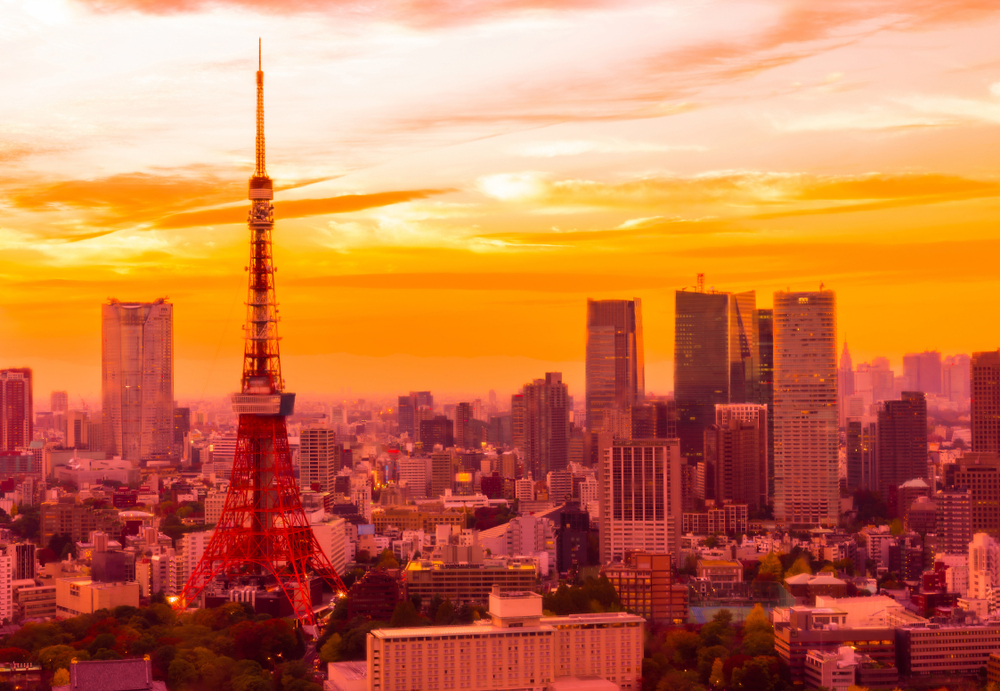Hidemasa Nakamura sat in front of a large Tokyo 2020 backdrop this past Thursday wearing a blue ascot tie that cools down when dipped in water.
The ascot is just one of the countermeasures the Tokyo 2020 Organizing Committee is proposing to help spectators, athletes and volunteers beat the blistering heat they will face during next year’s Summer Games.
Stifling weather took its toll on Tokyoites during summer 2018, with temperatures exceeding 38 degrees Celsius in central Tokyo. Kumagaya in Saitama recorded temperatures of 41.1 degrees, the highest ever on record in Japan.
“As we experienced last year in Tokyo, heat is intense in the summer months,” said Nakamura, the Tokyo 2020 Games delivery officer. “We want spectators to feel as comfortable as possible despite coming to a very hot and humid environment.”
Summer Heat Wave
The Tokyo 1964 Olympic Games were held in October, as even then the city’s summer heat was notoriously suffocating. Half a century later, and with an average temperature a few degrees higher, the Games will be held in Tokyo’s hottest months of July and August.
Nakamura said Tokyo 2020 is taking a holistic approach to addressing the effects of the heat and humidity, and athletes, spectators and staff will be provided with a wide range of support by Tokyo 2020, local authorities, the national government and by Tokyo 2020 partner companies.
In addition to providing 36 items already available for sale through the Tokyo 2020 Olympic website, including the ascot tie, fans, visors and cooling pads, Nakamura said the committee is looking to implement multiple countermeasures on location at the Olympic venues. For example, schoolchildren are planting morning glory flowers to grow along pathways that will provide shade, and beauty.
We have to study what is permissible and what is not permissible, and we need to clearly communicate what is allowed.
Other measures to help beat the heat might include mist sprays, rest areas, large cooling fans, tents and first aid stations. They will look at handing out clear plastic bags in which spectators can place their belongings to help expedite the security check-in process.
Going against past protocol, Nakamura said the committee is considering the option of allowing spectators to bring their own drink bottles into stadiums, a practice not allowed at past Olympic events due to security reasons.
“We will sell drinks inside venues. There will be water fountains. The quantity will be sufficient, but it is unrealistic to expect people [suffering heat stroke] to be able to buy a bottle of water in such a short time,” said Nakamura. “We have to study what is permissible and what is not permissible, and we need to clearly communicate what is allowed.”
Prevention and Precaution
This summer several test events will be held at Olympic venues including Shiokaze Park, Sea Forest Waterway, Odaiba Marine Park, Oi Hockey Stadium and the marathon route to determine the effectiveness and viability of each countermeasure.
Nakamura said observers will be sent to the Koshien high school baseball tournament to study heat countermeasures, and the Ministry of the Environment will distribute surveys to international visitors at Narita Airport to glean more information. Based on results of the studies, Nakamura said budgeting, staffing and countermeasure implementation will be determined.
“There might be some variation. Some items might not come to realization,” said Nakamura. “This directly affects people’s health and safety, so we are taking this very seriously.”
Not every element is so significant on its own, but the combination of a variety of measures is what will make our efforts meaningful.
Precautionary leaflets will be distributed at Olympic venues in multiple languages. Nakamura said location-specific weather information and any necessary warnings will be provided in real time on the Tokyo 2020 website and mobile app, the latter of which is scheduled to be online by May or June 2020.
“Not every element is so significant on its own, but the combination of a variety of measures is what will make our efforts meaningful,” said Nakamura. “Probably what is most effective is dispensing knowledge about heat stroke and how to prevent heat stroke.”
Updated On February 16, 2021








